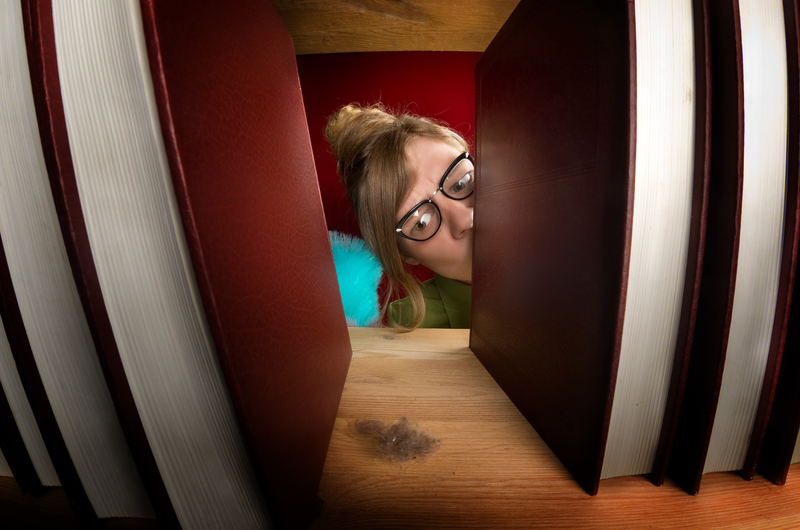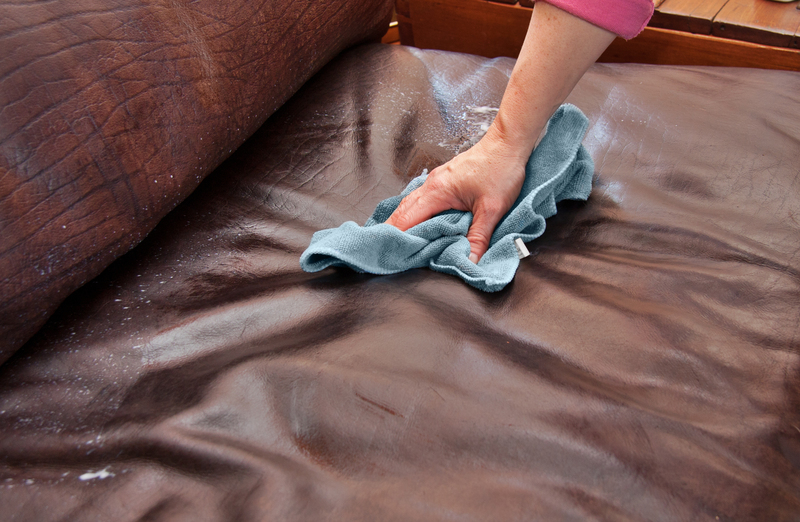Achieve Culinary Bliss with a Spotless Stovetop: Here's How
Posted on 15/06/2025
Achieve Culinary Bliss with a Spotless Stovetop: Here's How
Cooking is a joy, but a messy stovetop can quickly turn your kitchen haven into a stress zone. Achieving culinary bliss isn't just about mastering recipes--it's also about maintaining a spotless stove. In this comprehensive guide, we'll show you how to keep your stovetop immaculate, combining expert cleaning techniques with practical tips. Impress your guests, enjoy a hygienic kitchen, and elevate your whole cooking experience by learning how to get--and keep--your stove top pristine.

Why a Spotless Stovetop Matters
- Improved Cooking Results: A clean stove heats more evenly, ensuring food is cooked to perfection.
- Kitchen Safety: Built-up grease and grime increase fire risks. Keeping your cooktop clean promotes safety.
- Boosted Aesthetics: A gleaming stovetop enhances the overall appeal of your kitchen.
- Easier Maintenance: Regular cleaning prevents stubborn stains and saves time in the long run.
- Hygienic Environment: A spotless cooking surface reduces the risk of bacteria and pests.
Understanding the Different Types of Stovetops
Before you dive into the scrubbing, identify your stovetop type. Each requires distinct cleaning routines for best results:
- Gas Stovetops: Feature burners, grates, and drip pans that may need separate treatment.
- Electric Coil Stovetops: Have exposed coils and removable drip pans.
- Glass/Ceramic Stovetops: Present a flat, fragile surface susceptible to scratching.
- Induction Cooktops: Smooth, cool surfaces with sensitive electronics below.
How to Identify Your Stovetop for Proper Spotless Cleaning
- Gas: Raised cast iron grates and visible burners.
- Electric: Metal coils that heat up when turned on.
- Glass/Ceramic/Induction: Entirely smooth, often with touch controls.
Knowing your model helps you apply the best stovetop cleaning techniques for each surface and avoid damage.
Essential Supplies for a Sparkling Stove Top
Whether you're aiming for a spotless cooktop after a marathon baking session or quick daily cleanups, having the right tools streamlines the process. Stock your cleaning kit with:
- Microfiber cloths: Gentle yet effective for wiping and polishing.
- Non-abrasive sponges or scrubbing pads: For removing tough residues without scratching surfaces.
- Dish soap: Breaks down grease and food particles.
- Baking soda: Natural deodorizer and gentle abrasive for persistent marks.
- White vinegar: Dissolves grease and leaves a streak-free finish.
- Soft brush or old toothbrush: Perfect for tight crevices and knobs.
- Specialized cooktop cleaner: For glass, ceramic, and induction surfaces.
- Plastic scraper: Remove burnt-on gunk from glass stove tops.
- Gloves: Protect your hands from harsh cleaners.
Step-by-Step Guide to a Spotless and Hygienic Stovetop
Let's break the cleaning routine into manageable steps so you can achieve a spotless stove top without stress.
1. Preparation: Safety First
- Turn off all burners and ensure the surface is cool.
- If necessary, unplug your electric stove or induction cooktop.
- Remove pots, pans, and any detachable stove parts (grates, burners, knobs, and drip trays).
2. Remove Loose Debris
- Wipe away crumbs and loose food particles using a dry microfiber cloth. This prevents scratching the surface during deeper cleaning.
3. Soak Removable Parts
For gas and electric stoves:
- Soak grates, burners, and drip pans in hot, soapy water for 15-20 minutes. This loosens grime and baked-on residue.
- Scrub gently with a non-abrasive pad or brush.
- Rinse thoroughly and dry before reassembling.
4. Cleaning the Stovetop Surface
For Gas and Electric Coil Stovetops:
- Create a mixture of dish soap and warm water.
- Dip your sponge or cloth, wring out excess water, and wipe down the surface, focusing on spills and stains.
- Use a soft brush or toothbrush for hard-to-reach places, such as around the burners and knobs.
For Glass, Ceramic, or Induction Cooktops:
- Check manufacturer's guidelines before using cleaning agents.
- Sprinkle baking soda over stubborn spots or burnt-on residue.
- Spray lightly with vinegar to create a foaming reaction.
- Cover with a damp microfiber cloth and leave for 15 minutes.
- Gently wipe clean, using a plastic scraper for persistent marks.
- Buff with a dry microfiber cloth for a streak-free shine.
5. Dealing with Stubborn Stains
- For persistent grease or sauce stains, apply a paste of baking soda and water. Let sit for 10 minutes, then scrub gently.
- For burnt-on sugar or caramel, use a specialty cooktop scraper (only on glass or ceramic surfaces) and avoid metal tools that can cause scratches.
- Rinse thoroughly and wipe dry to avoid streaks.
6. Polish and Protect
- Finish by wiping the entire surface with a solution of 1:1 water and vinegar to remove any remaining residue and deodorize.
- Dry with a microfiber cloth to achieve a sparkling finish.
- For gas stoves, reassemble the burners, grates, and knobs only when completely dry.
Pro Tips for Ongoing Stovetop Spotlessness
Maintaining a clean stovetop doesn't need to be a chore. These habits help you keep your cooktop looking like new:
- Wipe Down Daily: After each cooking session, do a quick wipe with a damp cloth to prevent sticky residue buildup.
- Tackle Spills Immediately: The sooner you clean up spills, the less likely they are to harden and stain. For sugary spills on glass tops, immediate removal avoids permanent marks.
- Avoid Harsh Chemicals: Stick to mild detergents and natural cleaners to preserve your stovetop's finish.
- Protect Your Surface: Consider stove-top liners (for gas/electric) or silicone mats, which catch spills and are easy to clean.
- Don't Forget the Knobs: Grease can collect around knobs, so remove and clean them weekly.
- Deep Clean Weekly: Set aside time once a week for a more thorough scrubbing and soaking of removable parts.
- Ventilate While Cooking: Use your range hood or open a window to minimize greasy residue settling on the stove.
Homemade Stovetop Cleaners: Eco-Friendly Solutions
Commercial cleaners are effective, but natural alternatives offer a greener, budget-friendly choice. Try these DIY stove top cleaners:
- Baking Soda & Water Paste: Mix to a thick paste to gently scrub off stains without damaging surfaces. Ideal for all stovetops.
- Vinegar Spray: Fill a spray bottle with white vinegar. Spray, let sit, then wipe for a streak-free shine and natural degreasing.
- Lemon Juice: Cuts through grease and leaves a fresh scent. Use alone or combine with baking soda for a gentle scrub.
Recipe for Homemade Glass Stovetop Cleaner
- Sprinkle baking soda generously over the cool glass or ceramic surface.
- Cover with a towel soaked in hot water. Let sit for 15 minutes.
- Wipe away residue with the towel, followed by a clean, dry cloth for polishing.
What Not to Do: Common Mistakes to Avoid on Your Clean Stovetop
Protect your investment and ensure culinary bliss with a spotless stovetop by steering clear of these pitfalls:
- Don't Use Steel Wool or Abrasive Pads: These scratch and dull finishes, especially on glass and ceramic tops.
- No Harsh Chemicals: Avoid using oven cleaner, ammonia, or bleach, which can discolor or corrode surfaces.
- Don't Submerge Electric Components: Electric elements and some gas burners can be damaged by water immersion.
- Allow Thorough Drying: Wet burners or coils can short-circuit or fail to light.
- Check Manufacturer's Instructions: Always refer to your appliance's care manual for specific recommendations.
Stovetop Cleaning FAQs
How Often Should I Deep Clean My Stove Top?
Aim for daily wipe-downs and deep cleaning at least once a week. More frequent scrubbing may be needed if you cook often or prepare oily dishes.
What If I Have Burnt-On Grease?
Soak burnt areas with a baking soda and water paste or apply vinegar. For glass or ceramic, use a plastic scraper gently.
Can I Use Vinegar on All Stovetops?
Vinegar is generally safe for most surfaces, but avoid it on aluminum parts, as it can cause discoloration. If in doubt, check your manufacturer's instructions.

Maintaining Culinary Bliss: Upgrading Your Stovetop Routine
Your kitchen is not just another room--it's the heart of your home. Regularly keeping your stovetop spotless not only prevents headaches but also inspires better, more joyful cooking. By understanding your stove, using the right tools and techniques, and adopting a proactive approach, you can achieve culinary bliss every time you step up to your cooktop.
Remember: The journey to a sparkling stove isn't about perfection--it's about progress and pride in your cooking space!
Summary: Your Path to a Perfectly Clean Stovetop
- Identify your stovetop type for tailored cleaning.
- Gather essential supplies for fast, effective results.
- Follow step-by-step cleaning rituals, from debris removal to stain treatment.
- Use DIY cleaners to save money and avoid chemicals.
- Adopt regular upkeep habits for a perpetually spotless cooking space.
Incorporating these habits and tips ensures you will achieve culinary bliss with a spotless stovetop--where every meal is a delight, and every moment in your kitchen is a pleasure. Happy cooking!





